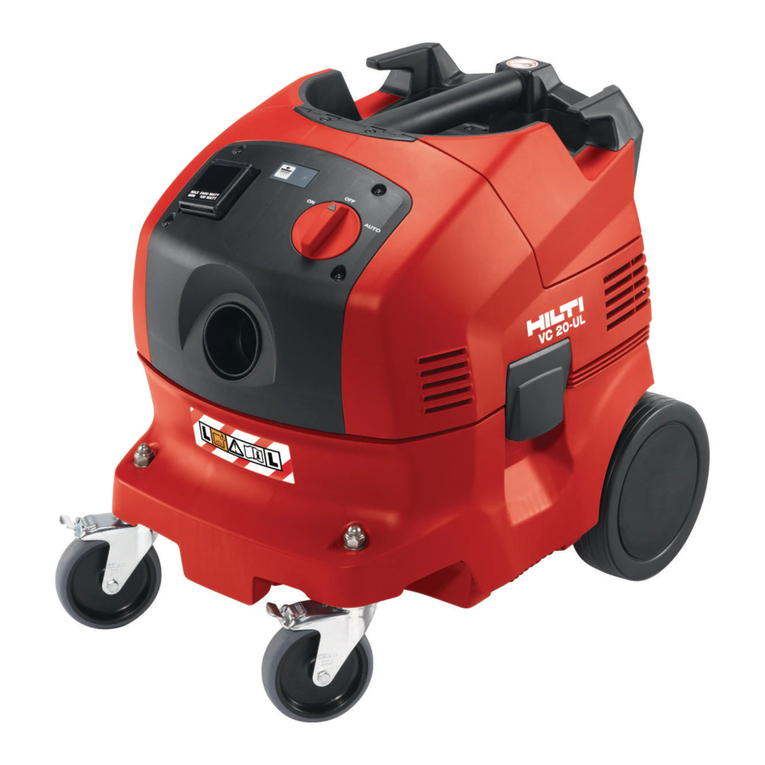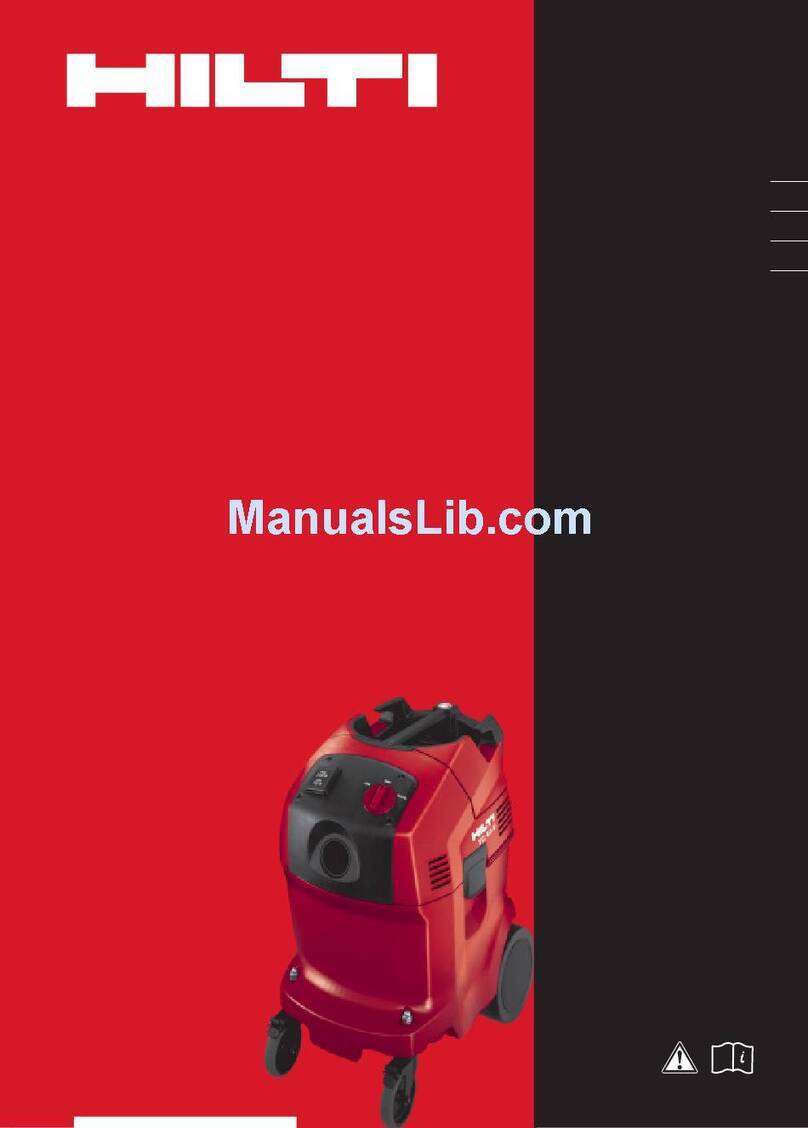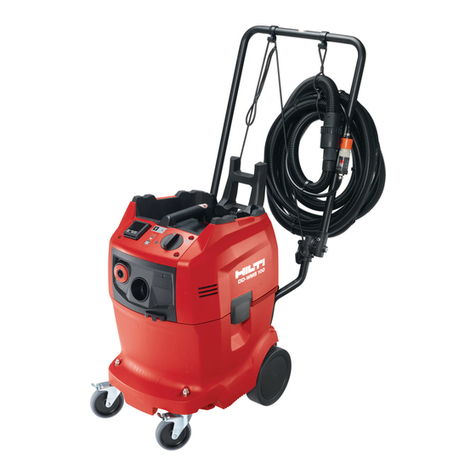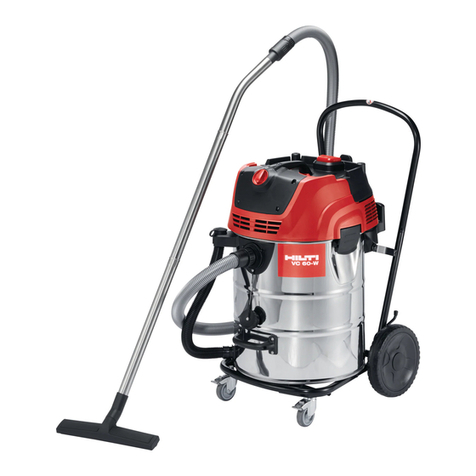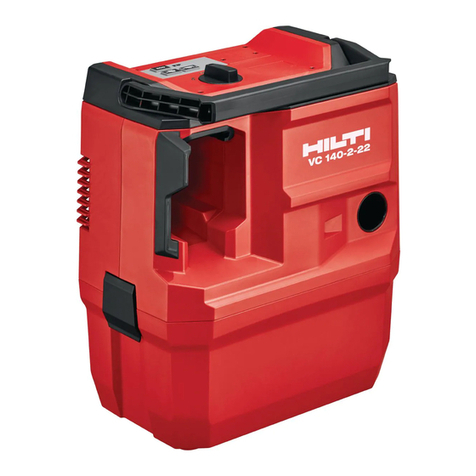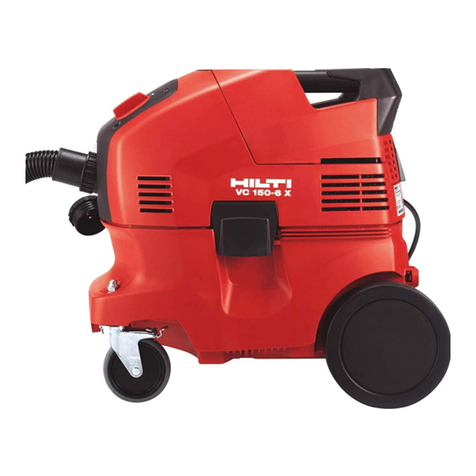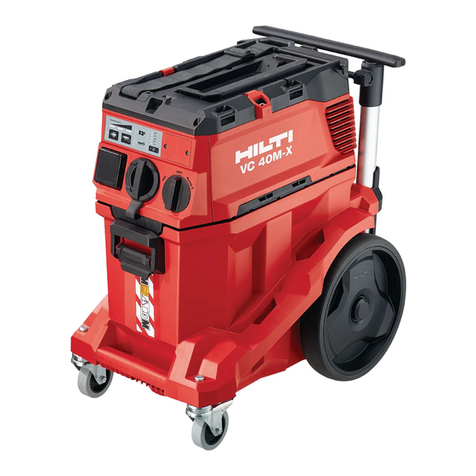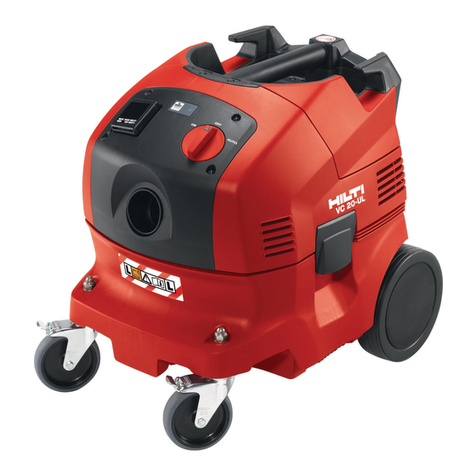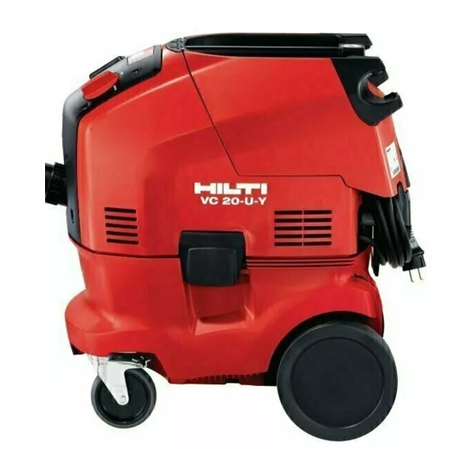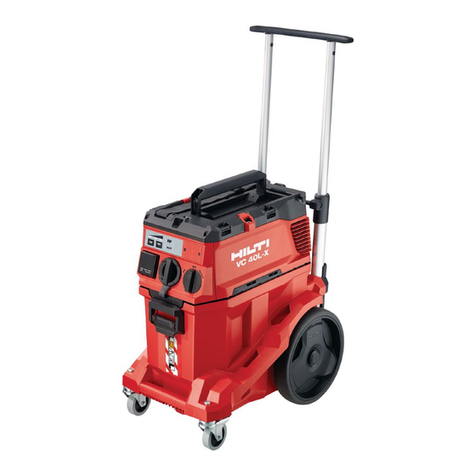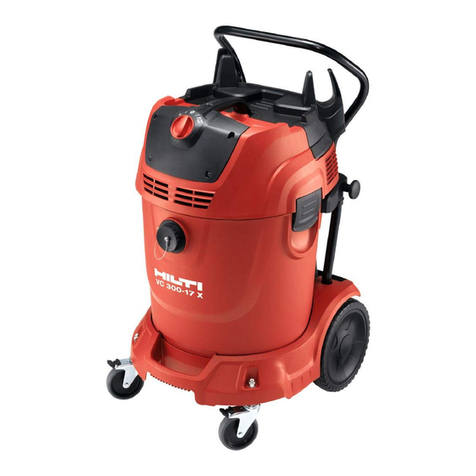3
Sicherheitshinweise
Achtung:
Beim Gebrauch von Elektrowerkzeugen sind zum Schutz
gegen elektrischen Schlag, Verletzungs- und Brandge-
fahr, folgende grundsätzliche Sicherheitsmassnahmen
zu beachten.
Lesen und beachten Sie alle diese Hinweise, bevor Sie
dieses Elektrowerkzeug benutzen. Bewahren Sie die
Sicherheitshinweise gut auf!
■
1Halten Sie Ihren Arbeitsbereich in Ordnung. Unord-
nung im Arbeitsbereich kann Unfälle zur Folge haben.
■
2Berücksichtigen Sie Umgebungseinflüsse. Setzen Sie
Elektrowerkzeuge nicht dem Regen aus. Benützen Sie
Elektrowerkzeuge nicht in feuchter oder nasser Umge-
bung. Sorgen Sie für gute Beleuchtung. Benützen Sie
Elektrowerkzeuge nicht in der Nähe von brennbaren Flüs-
sigkeiten oder Gasen.
■
3Schützen Sie sich vor elektrischem Schlag. Vermei-
den Sie Körperberührung mit geerdeten Teilen, z.B. Roh-
ren, Heizkörpern, Herden, Kühlschränken.
■
4Halten Sie Kinder fern. Lassen Sie andere Personen
nicht das Elektrowerkzeug oder das Kabel berühren. Hal-
ten Sie andere Personen von Ihrem Arbeitsbereich fern.
■
5Bewahren Sie Ihre Elektrowerkzeuge sicher auf. Unbe-
nutzte Elektrowerkzeuge sollten an einem trockenen,
hochgelegenen oder abgeschlossenen Ort, ausserhalb
der Reichweite von Kindern, abgelegt werden.
■
6Überlasten Sie Ihre Elektrowerkzeuge nicht. Sie arbei-
ten besser und sicherer im angegebenen Leistungsbe-
reich.
■
7Benutzen Sie das Elektrowerkzeug nicht für solche
Zwecke, für die es nicht vorgesehen ist (z. B. Einspan-
nen von Bohrwerkzeugen oder Ähnliches, Einspannen
von Sägeblättern zur Holzbearbeitung etc.).
■
8Tragen Sie geeignete Arbeitskleidung! Tragen Sie kei-
ne weite Kleidung oder Schmuck, Sie könnten von beweg-
lichen Teilen erfasst werden. Bei Arbeiten im Freien sind
Gummihandschuhe und rutschfestes Schuhwerk emp-
fehlenswert. Tragen Sie bei langen Haaren ein Haarnetz.
■
9Tragen Sie eine Schutzbrille. Verwenden Sie bei stau-
berzeugenden Arbeiten eine Atemmaske.
■
10 Schliessen Sie die Staubabsaug-Einrichtung an. Wenn
Vorrichtungen zum Anschluss von Staubabzugs- und
auffangeinrichtungen vorhanden sind, überzeugen Sie
sich, dass diese angeschlossen und richtig benutzt wer-
den.
■
11 Verwenden Sie das Kabel nicht für Zwecke, für die es
nicht bestimmt ist. Tragen Sie das Elektrowerkzeug nie-
mals am Kabel. Benutzen Sie das Kabel nicht, um den
Stecker aus der Steckdose zu ziehen. Schützen Sie das
Kabel vor Hitze, Öl und scharfen Kanten.
■
12 Sichern Sie das Werkstück. Benutzen Sie Spannvor-
richtungen oder einen Schraubstock, um das Werkstück
festzuhalten. Es ist damit sicherer gehalten als mit Ihrer
Hand, und Sie haben ausserdem beide Hände zur Bedie-
nung des Elektrowerkzeugs frei. Spannen sie nie das
Elektrowerkzeug in den Schraubstock ein.
■
13 Vermeiden Sie abnormale Körperhaltung. Sorgen Sie
für sicheren Stand und halten Sie jederzeit das Gleich-
gewicht.
■
14 Pflegen Sie Ihre Werkzeuge mit Sorgfalt. Halten Sie
die Werkzeuge scharf und sauber, um besser und siche-
rer arbeiten zu können. Befolgen Sie die Wartungsvor-
schriften und die Hinweise über den Werkzeugwechsel.
Kontrollieren Sie regelmässig das Kabel des Elektro-
werkzeugs, und lassen Sie es bei Beschädigung von
einem anerkannten Fachmann erneuern. Kontrollieren
Sie Verlängerungskabel regelmässig und ersetzen Sie
sie, wenn sie beschädigt sind. Halten Sie Handgriffe
trocken und frei von Öl und Fett.
■
15 Ziehen Sie den Stecker aus der Steckdose, bei Nicht-
gebrauch des Elektrowerkzeugs, vor der Wartung und
beim Wechsel von Werkzeugen.
■
16 Lassen Sie keine Werkzeugschlüssel stecken. Über-
prüfen Sie vor dem Einschalten, dass Schlüssel und Ein-
stellwerkzeuge entfernt sind.
■
17 Vermeiden Sie unbeabsichtigten Anlauf. Tragen Sie
das an das Stromnetz angeschlossene Gerät nicht mit
dem Finger am Schalterdrücker. Vergewissern Sie sich,
dass der Schalter beim Einstecken des Steckers in die
Steckdose ausgeschaltet ist.
■
18 Verlängerungskabel im Freien. Verwenden Sie im Frei-
en nur dafür zugelassene und entsprechend gekenn-
zeichnete Verlängerungskabel.
■
19 Seien Sie aufmerksam. Achten Sie darauf, was Sie
tun. Gehen Sie mit Vernunft an die Arbeit. Benutzen Sie
das Elektrowerkzeug nicht, wenn Sie unkonzentriert sind.
■
20 Überprüfen Sie das Elektrowerkzeug auf eventuelle
Beschädigungen. Vor weiterem Gebrauch des Elektro-
werkzeugs müssen Schutzvorrichtungen oder leicht
beschädigte Teile sorgfältig auf ihre einwandfreie und
bestimmungsgemässe Funktion untersucht werden.
Überprüfen Sie, ob die beweglichen Teile einwandfrei
funktionieren und nicht klemmen, oder ob Teile beschä-
digt sind. Sämtliche Teile müssen richtig montiert sein
und alle Bedingungen erfüllen, um den einwandfreien
Printed: 07.07.2013 | Doc-Nr: PUB / 5069489 / 000 / 00
